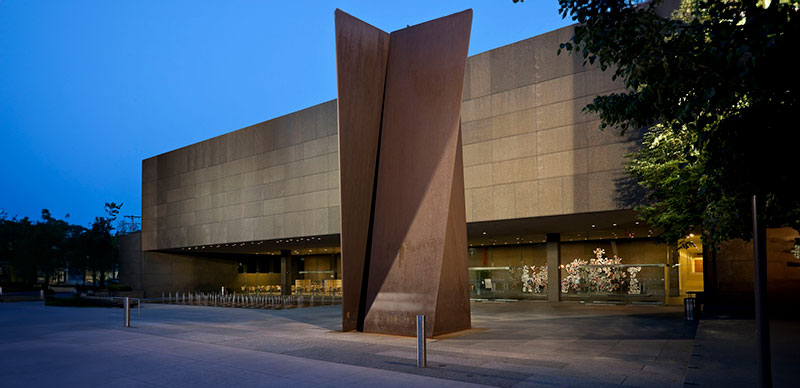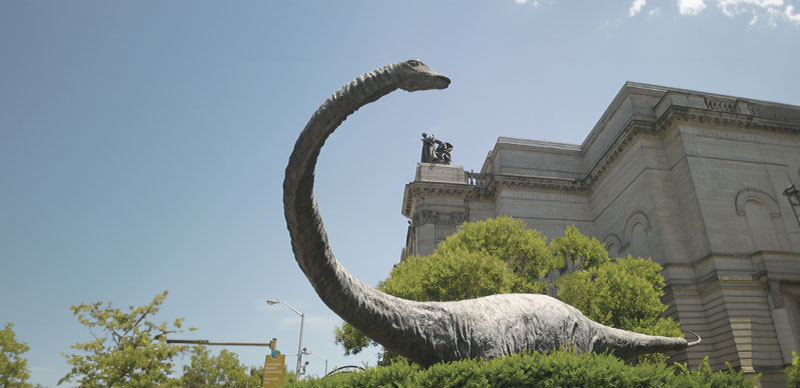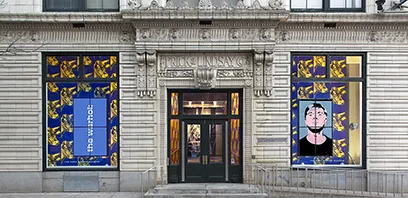A novelist researches a shadowy figure in history: Anna Mozart
By Liane Ellison NormanIn 1991 I found myself reading The Letters of
Mozart and His Family-a copious and lively correspondence between Leopold Mozart and
his landlord, his wife and daughter, and his now-famous son.1 It makes good reading,
especially if one does not take it too literally. The letters are driven by a variety
of motives. Leopold Mozart feared the scrutiny of the archbishop’s-his employer’s-spies,
but he also wanted his son’s success on concert tours to be widely known. He meant
to promote his son’s reputation, which he managed with great care. Many of the letters
between Leopold and Wolfgang reflect a struggle for control of Wolfgang’s life and
career, making some letters weapons as much as news accounts.
Leopold’s wife, Anna, appears in the letters-sometimes she is referred to, and
sometimes she is responded to. She herself writes some of the letters. Anna is what
biographers call a “shadowy” presence in the well-documented story of Johannes Chrysostamus
Wolfgangus Theophilus Mozart, whom today we call Wolfgang Amadeus. 2 Behind this child
prodigy and genius, someone mended the clothes, washed the socks, taught him table
manners and provided the daily care needed to free the child prodigy so he could focus
on his art. Several letters in Anna’s own voice are written to her husband and talented
daughter, Nannerl, who stayed behind in Salzburg when Wolfgang went with his mother
to Munich, Mannheim and Paris in 1777-78. These few letters suggest an alert, intelligent
woman, earthy, and sensible, but profoundly torn by the power struggle between her
husband and her son over Wolfgang’s independence.
Most biographers, if they mention Mozart’s mother at all, note that her spelling
was erratic and that she accepted her husband’s superiority. Then they ignore her-except
for the influence they attribute to her over her son’s penchant for bathroom language,
which the biographers dislike and want to absolve him of. It is true that both Wolfgang
and his mother wrote with occasional earthy vulgarity, he more than she.
Experience tells us how pervasive and strong a mother’s influence is. What role,
I wondered, did Anna play in her son’s human and musical development? What would it
be like to bear and raise someone like Mozart? Thus began a journey of imagination
and research. There was too little information about Anna Mozart for a biography,
so I decided to write a novel-the first fiction I had attempted in 32 years.
I was intrigued by a 1770 letter from Leopold and Wolfgang to the Mozart women
in Salzburg. From Bologna, Leopold remarked to his wife and daughter, “So you have
had three concerts?” Wolfgang added, “I hope that I shall soon hear those Pertl chamber
symphonies.” Frau Mozart, I discovered, was born Anna Maria Walpurga Pertl. It seemed
likely that no other Mozart was likely to title a composition with her maiden name
except for Anna. Having unearthed the little information that exists about this woman,
I discovered that Anna’s father had for a time earned his living as a professional
musician in Salzburg, while her mother was the daughter of a Salzburg court musician.
There was more music in the maternal than the paternal genes, I realized.
In 1774, Leopold wrote to Anna from Munich,
“Please look up the two Litanies De Venerabili Altaris Sacramento, which are performed
in the Hours. There is one of mine in D major (the score will surely be with it),
a recent one which begins with the violin and double bass staccato (you know the one
I mean); at the Agnus Dei the second violin has triplet notes the whole time. Then
you will find Wolfgang’s great Litany. The score is with it, bound in blue paper.
Make quite sure that all the parts are there….”
This letter indicates that Anna could read music, and therefore must have been
a musician, perhaps a composer.
Anna was born in St. Gilgen,
a village near Salzburg, in 1720. She married Leopold, a court musician and a complex
and difficult man, and within nine years gave birth to seven children, of whom five
died in infancy. Both her surviving children, Nannerl, the fifth, and Wolfgang, the
seventh, were musical prodigies. Anna died in Paris in 1778 while on tour with Wolfgang.
In order to fill in the blanks in this otherwise sparse story, I needed information
about the daily life of a woman during those 58 years. I traveled to Salzburg and
Vienna, visited the house Anna lived in from the time of her marriage until five years
before her death, trod along the same cobbled streets, alleys and marketplaces (all
well preserved), and visited some of the palaces in which her children performed.
But I needed to find out how children were raised, what foods an artisan housewife
would have prepared, what birth control was practiced, what diseases were common-such
as ergotism3-what remedies and doctoring were in use, what kinds of bathing and toilet
facilities existed, what childbirth practices were, how people dressed and how they
did their hair and whether women musicians practiced their art, and on and on.
A decade before Anna’s birth, the English essayist and wit Richard Steele wrote,
“A woman is a daughter, a sister, a wife and a mother, a mere appendage to the human
race.” This was the view of most of the men who governed Anna Pertl Mozart’s life.
It would have been difficult for her to pursue a musical vocation, especially as a
composer, though some women of her time were able to do so.
I had the plot of my Bildungsroman, the story of a female child born into a musical
family, who has musical aspirations that must give way both to common assumptions
about women and family requirements. Anna’s hopes of a public musical career cannot
come to fruition. Her longings, it seems to her, must prove her weaker mind. She struggles,
without benefit of a feminist language, to articulate her wishes and needs, to find
her particular way. For the Enlightenment commitment to the unalienable Rights of
Man required a mother or wife to perform the homely tasks without which the vaunted
liberties of Man were not possible.
Much of my research on Mozart’s Mother took place at Carnegie Library of Pittsburgh,
which was of inestimable help in this project (along with libraries at the University
of Pittsburgh, the University of California at Berkeley and the Mozarteum in Salzburg.)
Let me share a few examples of the problems, and answers, which my research led me
to.
One portrait exists of Anna Mozart. It was painted in 1775, probably by Pietro
Loronzoni. It shows a matronly woman wearing a rose-colored silk dress, whose slightly
plump hands display a length of lace. Another family portrait, painted after her death,
shows Leopold Mozart holding his violin and pictured in front of the tools of his
trade, an inkstand and quill pen, while Nannerl and Wolfgang are seated at the harpsichord.
Above hangs a picture of Anna, a copy of the 1775 portrait, though her dress this
time is blue and the style of her cap slightly altered.
Might lace be a clue to Anna’s interests and abilities? Since many portraits of
the period include props indicative of the subject’s profession, did this portrait
indicate that Anna made lace? I researched the history of lacemaking in the library’s
Music and Art Department. In my novel, Anna learns how to make lace at the convent
to which I send her after her father’s untimely death. The braiding together of threads
to make lace becomes, in Mozart’s Mother, emblematic of Anna’s eventual vocation,
which is holding her talented and strong-willed family together.
Another interesting mystery suggested by Anna’s portrait develops when one compares
it with portraits of her husband and children. The same artist painted individual
portraits of Leopold, Nannerl and Wolfgang in 1765 following their first concert tour
in Vienna. Wolfgang wears the splendid lavender silk suit the empress gave him, a
hand-me-down from her own children. One of his hands is partially shown, while the
other is tucked into his embroidered waistcoat, Napoleon style. (Loronzoni clumsily
inserts this hand into the placket in the wrong way, on the side that overlaps the
buttons.) Nannerl’s head was painted onto a ready-made dress, one hand unconvincingly
holding a flower, the other reaching off the canvas. One of Leopold’s hands is hidden
in a drape, while only the tips of five fingers show on the other hand. Painters were
paid by the hand, so the first three portraits reveal both Leopold’s habitual parsimony
and the small court salary he was paid, though he did well financially from his children’s
touring performances.
But Anna’s companion portrait was painted a full decade after her husband’s and
children’s and both her hands are shown. What’s the story here? I wondered, and imagined
a slight in 1765 repaired with two-handed restitution ten years later.
Two other research stories do not involve the Carnegie Library, where I did the
bulk of my research, but they’re good stories. Food preparation is an important part
of any woman’s life. I had read as much as I could find about 18th-century German
meals and, knowing from CMU historian Peter Stearns that potatoes had changed not
only the agriculture of 18th-century Europe, but demographics and courtship habits
as well, I served the Mozarts lots of potatoes. Then a friend found a reference to
a food historian who specializes in 18th-century Austrian food and who is also the
proprietor of a restaurant in Philadelphia. This gentleman, who has read the 18th-century
equivalent of The Joy of Cooking, very kindly spent an hour on the phone telling me
what food Anna likely prepared-and the potatoes all had to go, to be replaced by noodles,
fried dough, root vegetables and meat.
At one point in the Mozart letters, Nannerl was to visit her father and brother
in Munich, where Wolfgang’s opera La finta giardiniera was to be performed. A great
epistolary to-do arises about Nannerl’s hair: who would dress it? Clearly she was
not used to doing her own towering hairdo-the one shown in several portraits-by herself
and she worries about it. In her notebook, after her mother’s death, one of the recorded
events of most days is “Viktoria did my hair,” or “Katherl did my hair.” Leopold,
writing from Munich, tries to reassure her by advising that if she sleeps in her negligée
cap, she can preserve her hairdo. As it happened, the woman who owned the house in
which she put up was able to help Nannerl with her hair.
I wondered what the construction of this elaborate hairdo involved. Some pictures
show servants on step ladders dressing their ladies’ coiffures. I began by looking
for books on 18th-century hairdos and found little, then went to the Carnegie Museum
and Western Pennsylvania Historical Society and was eventually directed to the wigshop
at Williamsburg. I was fortunate to find someone both generous and expert. First,
of all, she pointed out, a great length of hair such as Nannerl would have needed
to achieve her “do” could not have been washed often: without hair dryers and central
heat, it would have taken days to dry. The hair was combed over wire frames and linen
pads stuffed with hemp seed and then pinned and pomaded into place. The pomade was
a mixture of perfume and lard. No wonder Nannerl fretted.
Notes
1 Edited by Emily Anderson, Norton, 1989.
2 The Latin “Theophilus” translated into German as “Gottlieb,” which when Mozart
toured in Italy became “Amadé.” The Salzburg man who stood godfather to all seven Mozart
children was named Amadeus Pergmayer. One of the little Mozarts, who died before his
first year, was named Amadeus in Herr Pergmayer’s honor. Wolfgang Mozart never called
himself “Amadeus,” but he did sometimes use “Amadé.”
3 Anna and Nannerl have, evidently, described an illness in Salzburg, to which
Leopold and Wolfgang react in their letters from Italy. This disease, whose symptoms
are madness, dysentery and death, may well have been ergotism, diagnosed by Pittsburgh’s
researcher on lead, Dr. Herbert Needleman, and confirmed by the Cambridge World History
of Human Disease, ed. Kenneth Fl. Kiple, Cambridge University Press, 1993.
4 Phil Hallen, executive director of the Maurice Falk Medical Fund, directed me
to a Yale sanitation historian, who gave me the titles of books the Carnegie Library
provided.
The hardest work in developing the novel was not the research (although I had a
merry chase trying to find out how the chamber pots of the Hapsburg family in Vienna
and their 150-at-a-time guests would have been emptied when there were no connecting
hallways).4 Rather the great challenges was in creating a woman who suffered the loss
of her own calling-her art-yet heard a second call from her family and responded to
it with passion and energy. Anna’s is the story of innumerable women whose potential
vocations were refused even by enlightened men, who knew that to acknowledge women’s
deepest yearnings might be to lose their services.
Liane Ellison Norman is a freelance writer in Pittsburgh. She is working on
a final revision of Mozart’s Mother.



